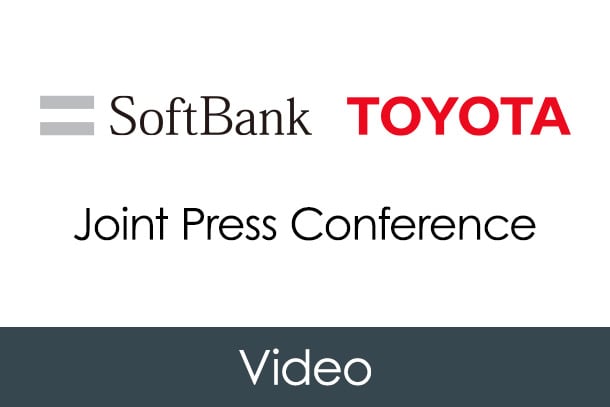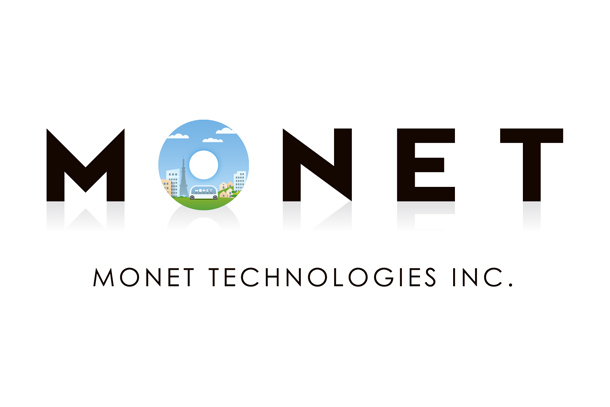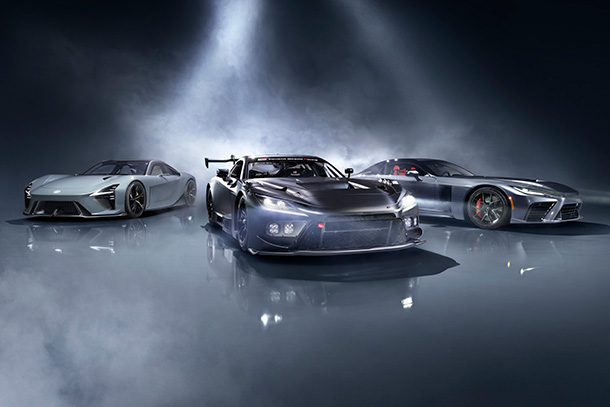Oct. 04, 2018
President Akio Toyoda Speech at Joint Press Conference by Toyota Motor Corporation and SoftBank Corp.
Good afternoon to you all. I am Akio Toyoda.
Looking back, I first met Son-san about twenty years ago, when the Internet was beginning to spread across Japan.
At the time, I was a Section Manager and Executive Vice President Tomoyama was an Assistant Manager.
After some effort, we had overcome initial reluctance inside Toyota to finally set up Gazoo.com from scratch. This was a new website that allowed people to discuss the sale of used cars via the internet at Toyota dealers all over the country.
We were about to start traveling around Japan with the aim of expanding the site to cover new cars. Son-san then asked the Toyota sales team at the time about introducing a proper "Net dealer" system at our dealers in Japan. This was an idea that had come from the U.S.
We had just expended all our energy on setting up Gazoo, so the idea was impossible to accept.
Eventually, Mr. Tomoyama and I went to see Son-san to turn down his proposal. I still remember it clearly.
Now, we have become President and Executive Vice President of Toyota; however, at the time, because we were just vigorous and energetic Section Manager and Assistant Manager, I'm sure we came across as discourteous. . I am grateful to Son-san for putting our discourtesy down to youthful enthusiasm.
With a history like this, there have been various rumors that Toyota and SoftBank do not get along.
As evidence, please search for "Akio Toyoda" on Yahoo.
You'll find plenty of pictures of my frowning face!
It's very different from Son-san, who has far more pictures of him smiling!
I'm going to ask for something to be done about this search algorithm!
Among those of you attending or watching today, some are probably wondering, "Why Toyota and SoftBank?"
As you all know, the automotive industry is facing sweeping once-in-a-century changes.
These changes have been caused by the advent of innovative new technologies called "CASE" for short.
CASE stands for "connected," "autonomous," "shared," and "electric." These ideas are totally changing the concept of the car, and our new competitors are radically changing the rules of competition in the market.
I think that cars will become part of our social network by connecting us to our communities through data and information, and helping to provide services that support our everyday lives.
In January, I spoke at the Consumer Electronics Show (CES) in the U.S. about how Toyota is transforming from a company that manufactures cars into a mobility company, or a company capable of providing all types of mobility-related services to society.
Please watch this short video.
Similar to the new "family" strategy announced by Son-san for the SoftBank group, I believe that friends and allies will be increasingly important in building the mobility society of the future.
Toyota's strategy to create these friends and allies has three main pillars.
The first is to strengthen ties with group companies that have the same roots as Toyota, such as Denso and Aisin.
In my own words, I have called this the "home and away" strategy.
The "home" part of the name refers to the reorganization of businesses within the Toyota group to consolidate duplicated functions into more competitive "home" companies, and the establishment of new companies within the group.
At the same time, we have to increase the number of friends and allies, and create de facto standards by actively selling competitive products to companies inside and outside the group.
That is the reasoning behind our strategy, but people are not moved by theories alone.
Personally, I prefer actions to words and I'd like you to watch this short video to see what I mean in action.
The key characteristic of the Toyota group is that we have the same roots.
That means we share the same basic business values, and it is the strength of the group.
However, because people run businesses, it is only natural that relationships grow weaker over time, and that you start moving in different directions, even if you come from the same roots.
Despite that, since the beginning, the Toyota group has had "cars" as a common language and unshakeable foundation.
I believe that we will strike a rapport together by putting cars first, building cars that are meant to be driven, and facing up to each other honestly and with determination. Only after building that rapport can we feel that the group is not just an organization of convenience, but a collection of friends and kindred spirits that share the same values.
The second pillar is strengthening alliances with other automakers.
We already have alliances with Subaru, Mazda, and Suzuki. However, the purpose of these alliances is not to expand volume through investment.
In every case, we respect each other's strengths in technological development, production engineering, and sales networks. The objective of these alliances is to become more competitive to help us build ever-better cars.
For example, in September last year, Mazda, Denso, and Toyota set up a company called EV C.A. Spirit.
Combining the strengths of each of its founding members, this company is taking on the challenge of identifying new development methods.
The company has also accepted support from Subaru, Suzuki, Daihatsu, Hino, Isuzu, and Yamaha.
In my own words, I see this as a collaboration between automakers with a continued passion for building vehicles that people will love.
Finally, the third pillar is strengthening alliances with new friends and allies that are providing mobility services.
We have forged alliances with companies like Uber, Grab, Didi, and Getaround.
Many of these companies are valuable parts of Son-san's family strategy.
We see our partnership with SoftBank as a key part of the third pillar of our ally-building strategy.
When we were a company that focused only on manufacturing cars, we were unable to work together with SoftBank. Twenty years on, as we aim to become a mobility company, this partnership is indispensable.
We see SoftBank's strengths as its ability to judge based on foresight and their expertise in reading the seeds of the future.
In contrast, our strengths are the capabilities of our worksites centered on the Toyota Production System (TPS), or our ability to improve on site.
These are the capabilities to achieve both what we want to do and what we need to do in the real world. It also refers to the ability to make continuous improvements through a spirit of getting better and better: a process of evolution that creates products that are ever-better than before.
The car business does not end once a sale is made. In fact, you might say that the car business only starts after the sale.
Over twenty years, a single car will become an irreplaceable and beloved part of the lifestyle of several owners.
We have a dealer network across the whole world.
In Japan alone, including rental car stores, we have some 6,000 outlets. Over many years, this network has created bonds of trust with customers in the real world.
Our advantage is that we can use this trusted network to help roll out new mobility services.
We have many friends and allies that will continue to protect and fight for the car as something worthy of love.
At the same time, SoftBank has many friends and allies that will continue striving to create new mobility-related services, and build a more enjoyable mobility society.
I think the partnership between our two companies will involve many of these friends and allies, and will help to realize an unprecedented future mobility society.
In July this year, the founder of Toyota Motor Corporation, Kiichiro Toyoda, was inducted into the Automotive Hall of Fame in the U.S.
I do not think that the recognition of Kiichiro's accomplishments 80 years after the foundation of Toyota in this period of sweeping change is a coincidence.
Kiichiro used to say the following.
"When it came to loom technology, I am confident that we were the best in the world. But, as for automobiles, I didn't do a thing. It was my subordinates and those around me who did it."
These words reflect Kiichiro's feelings of gratitude based on his belief that "The automobile business is not something that one person alone can undertake. We were able to accomplish what we did only because many people came together and worked hard."
The induction of Kiichiro into the Automotive Hall of Fame at this time of sweeping change felt as if he was saying to me that the future cannot be created by one person alone: that it needs to be built by friends and allies sharing the same motivation.
I am not the founder of Toyota. I am merely continuing what others have passed on.
Over the years, the top management of Toyota have passed on the following lesson:
"For Japan, for the world, and for the next generation."
In other words, the spirit of working for someone other than yourself, and the spirit of working with your friends to make the future a brighter place.
You can have high expectations for the future of mobility that Toyota, SoftBank, and our friends, will create together.
Thank you.






